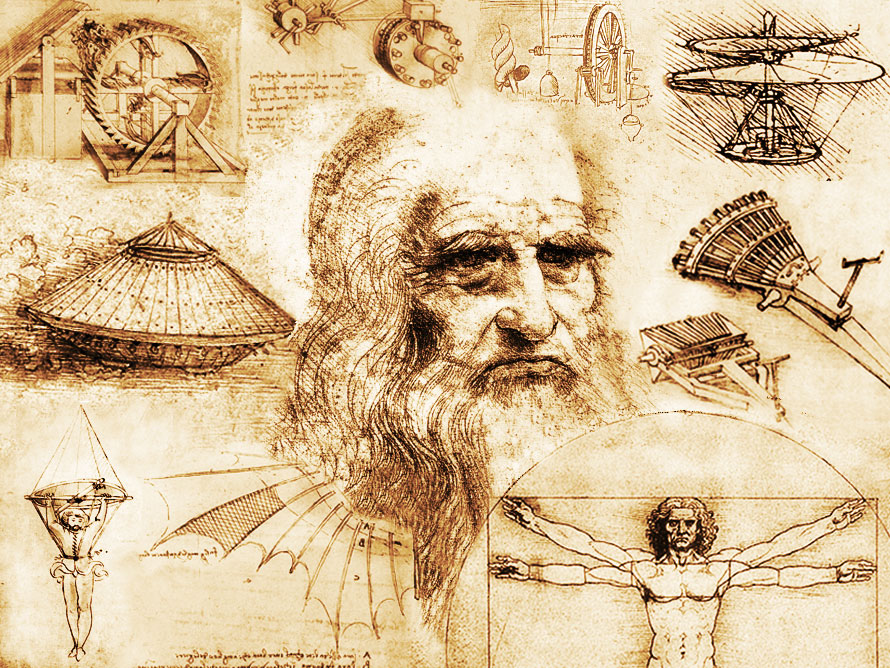Will there ever be another Leonardo da Vinci? He is known around the globe for his stunning paintings. But the Renaissance figure also pioneered new ways to understand the world.
Leonardo: Artist, scientist, hipster, genius
Will there ever be another Leonardo da Vinci? He is known around the globe for his stunning paintings. But the Renaissance figure also pioneered new ways to understand the world.
Code for success
Italy, late 15th century. Walking the streets is a young vegetarian, probably gay, who has avoided university in favour of learning through "experience". He wears a lot of pink.
More than 500 years after Leonardo da Vinci's death, we generally picture him as an old man. But in his youth, he was remarkably ahead of his time. Today, he would probably be called a hipsterAn informal term used to describe someone who follows the latest fashion and trends. .
Leonardo had little formal education. But at the age of 14, he was sent to train with the artist Andrea del Verrocchio in Florence. By 20, he qualified as a master in his own right.
He had trouble finishing projects. Fewer than 20 of his paintings remain, although they are some of the most famous in history - particularly the Mona Lisa and The Last Supper.
Yet Leonardo was not just a painter. As a true Renaissance manThe Renaissance was a period of European history between the 13th and 17th centuries. "Renaissance men" are known for being skilled at a number of varied subjects, instead of specialising in just one., he was also an engineer, scientist, mathematician, philosopher and musician. But he did not just dabble in other pursuits - he mastered them. His anatomical drawings picked up on details that scientists still use for learning today.
These studies of the human body helped to improve his art, too. "Only through the work he put into dissectingCutting up a body or plant to study the inside. corpses and studying muscles was he capable of painting the Mona Lisa's smile," writes Blake Morrison in The Guardian.
His inventions were rarely tested. But looking at them now, you might think he had glimpsed the future. He sketched designs for flying machines, parachutes, helicopters, scuba gear, tanks, machine guns and even a tennis racket.
His first biographer, 16th Century writer Giorgio Vasari, suggested his talents were sent directly from heaven. For Vasari, Leonardo's work was so extraordinary there could only be one possible conclusion: "Everything he does clearly comes from God rather than from human skill."
Yes: Leonardo was clearly an extraordinary and talented man. But there have been many individuals who have been awarded the title "genius" throughout history. Another Leonardo will come.
No: His genius cannot be replicated. People would come to watch him paint in order to witness a miracle. No one can master so many disciplines, from art to engineering to philosophy, like Leonardo da Vinci.
Or... We should focus on what Leonardo taught us, from the connection between the sciences and the humanities to the huge power of curiosity. Leonardo cannot live again, but his way of thinking can.
Will there ever be another da Vinci?
Keywords
Hipster - An informal term used to describe someone who follows the latest fashion and trends.
Renaissance man - The Renaissance was a period of European history between the 13th and 17th centuries. "Renaissance men" are known for being skilled at a number of varied subjects, instead of specialising in just one.
Dissecting - Cutting up a body or plant to study the inside.
Leonardo: Artist, scientist, hipster, genius
 Polymath: Leonardo produced over 7,000 pages of notes and drawings in his lifetime.
Polymath: Leonardo produced over 7,000 pages of notes and drawings in his lifetime. Glossary
Hipster - An informal term used to describe someone who follows the latest fashion and trends.
Renaissance man - The Renaissance was a period of European history between the 13th and 17th centuries. "Renaissance men" are known for being skilled at a number of varied subjects, instead of specialising in just one.
Dissecting - Cutting up a body or plant to study the inside.
